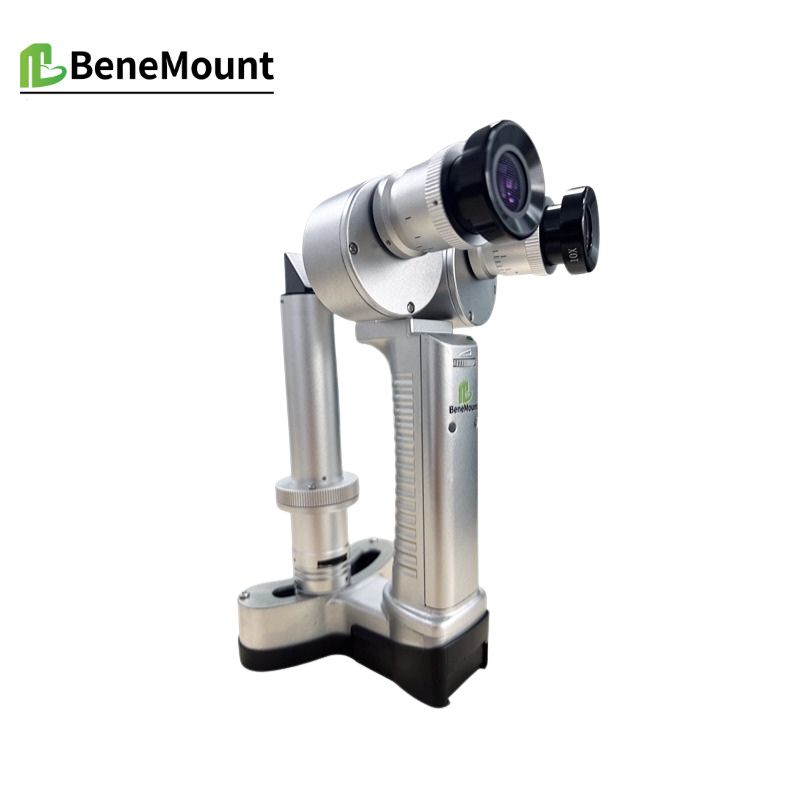Slit Lamp Cross-Contamination: Causes and Prevention
The slit lamp is an essential tool for ophthalmic examinations. However, research indicates that this equipment can also be a potential source of cross-contamination. Bacterial contamination of slit lamps not only affects the safe use of the device itself but also poses health risks to patients. Therefore, understanding the causes of slit lamp contamination and implementing effective measures to reduce it is crucial.
Primary Causes of Slit Lamp Cross-Contamination
According to a multi-center study conducted across Europe and the United States, which sampled 29 slit lamps, 58.6% (17 out of 29) of the slit lamps showed bacterial contamination before cleaning. Among these, the most commonly found contaminating bacteria were Staphylococcus aureus and Escherichia coli. Specifically, 41.4% (12 out of 29) of the slit lamps were contaminated with Staphylococcus species, including common pathogens like Staphylococcus pseudintermedius, which frequently causes skin infections in dogs. Furthermore, 13.8% (4 out of 29) of the slit lamps tested positive for Escherichia coli species
Causes
- Contamination Risk from Manual Operation: During routine ophthalmic exams, veterinarians need to manually hold the animal’s eyelids while adjusting the slit lamp’s light source. Since the slit lamp’s adjustment wheels are directly touched, and hands can’t be frequently disinfected, this increases the risk of bacteria accumulating on the slit lamp’s surface, especially after contact with patients who have ocular discharge.
- Slit Lamp Design Makes Cleaning Difficult: Most slit lamp slit adjustments involve multiple adjustment wheels that are often uneven or textured. This design makes cleaning more challenging, leading to pathogens potentially remaining on the equipment.
- Long-Term Bacterial Survival: Certain bacteria, such as Staphylococcus aureus, can survive on plastic or metal surfaces for days or even months. This means that bacteria on the slit lamp could potentially infect other patients over a long period.
Effective Measures to Reduce Cross-Contamination
Regular Cleaning and Disinfection
Research shows that routine cleaning significantly reduces bacterial contamination on slit lamp surfaces. In one study, the contamination rate of slit lamps dropped sharply to 13.8% (4 out of 29) after cleaning. This demonstrates that proper cleaning effectively removes most contaminants. Therefore, it’s recommended to immediately and thoroughly disinfect the slit lamp’s surfaces, especially the adjustment wheels, after each use. Using alcohol-based disinfectants or high-efficiency cleaning agents like hydrogen peroxide are currently recognized as effective methods.
Enhanced Hand Hygiene Management
Since manual operation is a primary cause of slit lamp contamination, it’s advised to disinfect hands between examining each patient. If feasible, using disposable gloves before touching the slit lamp, or ensuring hand sanitizer is readily available, will significantly reduce the risk of cross-contamination.
Equipment Design
The design of a slit lamp largely influences how easy it is to clean.
In the future, clinics could consider selecting or modifying slit lamps with smoother, easier-to-disinfect surfaces to reduce bacterial accumulation on uneven areas.
Standardized Cleaning Procedures
Establishing uniform cleaning and disinfection procedures for slit lamps is a critical step in reducing cross-contamination.
Every clinic should strictly adhere to established disinfection standards to ensure that the slit lamp is thoroughly cleaned after each use. Additionally, regularly train staff to ensure everyone masters the correct cleaning methods.
Regular Monitoring of Equipment Hygiene
Clinics should periodically test the bacterial contamination levels of slit lamps to ensure the effectiveness of cleaning procedures. If high contamination levels are found, the cleaning frequency should be adjusted promptly, or more effective disinfectants should be used.
Antibiotic Susceptibility
The study also performed antibiotic susceptibility testing on the bacteria isolated from the slit lamps. All detected Staphylococcus species were sensitive to antibiotics such as enrofloxacin and marbofloxacin, demonstrating the effectiveness of these drugs in preventing and treating infections caused by slit lamp contamination. However, some bacteria showed varying degrees of resistance to antibiotics, especially penicillin and amoxicillin. This highlights the importance of regular disinfection to reduce the reliance on antibiotics.
Conclusion
The widespread use of slit lamps in veterinary ophthalmology offers convenient and efficient examinations, but we cannot overlook the potential risk of cross-contamination. By implementing regular cleaning, enhancing hand hygiene, optimizing equipment design, and standardizing procedures, we can effectively reduce slit lamp contamination. This protects our patients from unnecessary infections and helps decrease antibiotic use, thereby lowering the risk of antibiotic resistance.
Maintaining cleanliness is not only essential for ensuring equipment functionality but also a core step in safeguarding animal health and reducing cross-infection. Let’s work together to minimize the risk of slit lamp contamination and provide safer medical services for our patients.


